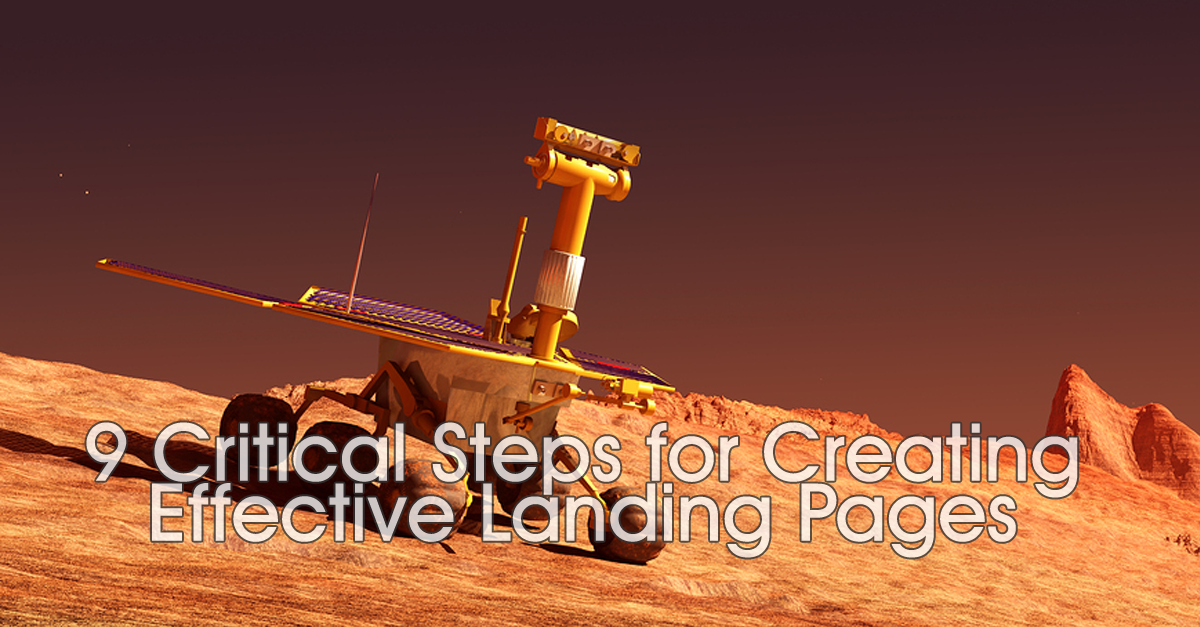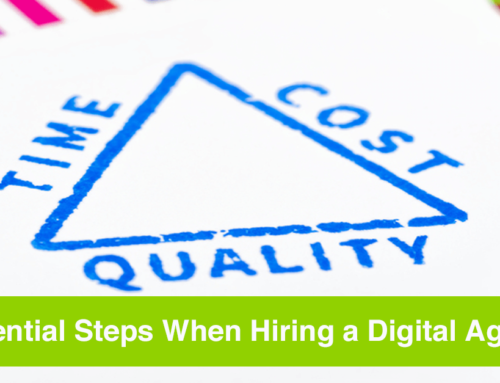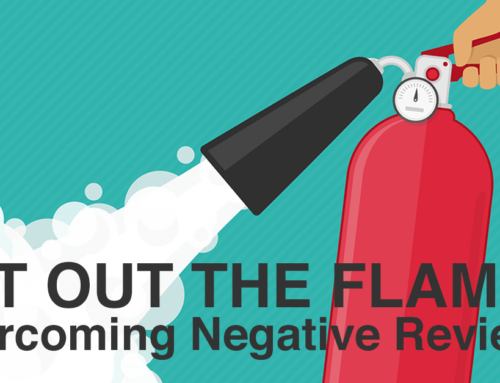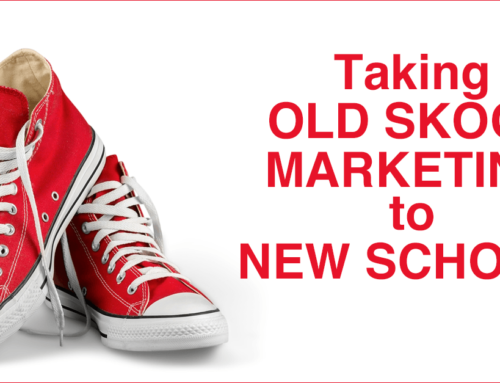The best (and worst) thing about online marketing today is that there’s no shortage of advice. Blog, Tweet, Like, Share. The traffic has to come from somewhere and go somewhere else, so how do you capture it? When you GET some web traffic, then what?
One of the worst strategies is letting traffic land on your home page. Sure, the home page is probably acceptable for the prospect you meet at a conference who knows roughly what you’re about (she’s probably looking at your site while she’s standing there talking to you). It probably isn’t acceptable, however, for anyone else who stumbles into your site. That’s where landing pages come into play. Narrowly targeted and designed for one purpose, landing pages can help you generate more leads. We rely on imagery, copywriting, analytics and experimentation to build landing pages.
Here are 9 critical steps we use for creating effective landing pages.
1. Plan Your Funnel
Not too many businesses are one-click conversions any more. Visitors who come to your site can be “courted” to become customers at some point in the future. You just have to get them interested in having a conversation. When you create a landing page, consider what your overall sales funnel looks like. What flow do you see for converting a cold lead into a happy customer? Plan it out via a series of emails, pages, contacts and offers to ultimately convert. For maximum effectiveness, plan your sales funnel BEFORE you do anything else.
We’ve been believers in “give to get” for a long time, and now that is nearly an expectation. Seth Godin’s Permission Marketing is founded on the idea of reciprocity. I’ll give you my email address to get something I consider valuable (more on that later). You may have a giveaway, or if your team is technically-oriented, a tool to perform some special action (price estimator, web crawler, configurator).
2. Nail Your Value Proposition
We see many small businesses who struggle explaining what they really do. Whether it’s a new product or an age-old service profession, you need a short statement (about 20 words) that explains what you are and why you’re better than someone else.
- Twisted Puppy helps small and midsize businesses use technology to grow their business, through websites, newsletters, online video and social media marketing.
- G8R Software builds apps for Apple devices to boost productivity for students and business professionals by making it easier to take great notes.
- OnRamp Digital helps recording artists create legal and monetizable cover song videos for YouTube and other video platforms.
You need to nail the WHAT and WHY as a precursor to the rest of the landing page development process.
Research Optimal Keywords
As we explained recently, do your keyword homework. You may think visitors are searching for homeowners policy, but they’re really searching for homeowners insurance. The subtle difference in verbiage makes a difference in how you’ll structure and write your landing pages. That is, you should use the words that your search audience uses to find what you do, not the jargon of your industry.
Sometimes we start our landing page journey with searches on stock image websites. Typing in those keywords can generate visual ideas (you may not use the stock photos, but you can use the sentiments). Search engines work too – do image searches on Google or Bing and find ideas there too.
Whether you use photos or illustrations, strive for really good ones. The old meeting handshake may have worked in 1992, but it’s overlooked today. Striking, unexpected visuals work much better. We also like to humanize things too – a photo of a smiling employee or a video testimonial from a satisfied customer are far more effective at building trust and interest on a landing page.
Don’t Underestimate Copywriting
Years ago, we referenced Claude Hopkins, essentially the godfather of good copywriting, and his teachings are still relevant today. Start with WHY: always lead with “the reason”. Nail the hook in your copy (hint: it’s related to your value proposition). Use your customers’ language, not industry jargon, to drive interest. Headlines matter. Benefits trump features. Social proof (e.g., customer testimonials, glowing reviews, positive media clippings, customer logos) is truly compelling. Prepare long form and short form versions of your copy – you’ll use them both in split testing (described in a moment…).
Consider Special Offers
As mentioned, give-to-get can be a useful element for landing pages. You can offer any number of things: white papers, webinars, eBooks, newsletters, special discounts, early access, extra materials.
Limit Your Landing Page to ONE Call to Action
We don’t like having any links on landing pages. By design, you want a single outcome. We like to think of Call to Action (CTA) in terms of button captions:
- Buy
- Subscribe
- Enroll
- Try
The moment you add a second CTA option, you dilute the sales funnel opportunity immensely. Don’t. Do. It.
Optimize for Search
Editing the copy should also involve a search engine optimization (SEO) review. We use tools that make sure we’re taking advantage of SEO techniques (headlines, descriptions, ALT tags, formatting, etc.). When you build a landing page, it’s a honeypot. Take full advantage of every angle it can be used (e.g., your Google Pay-Per-Click (PPC) campaign, your organic reach, your social media links).
Split Test & Adapt
We almost always create split tests for landing pages. “A|B” tests help determine if your landing page maximizes for conversion. If a million people visit your page and one signs up, you have no idea why it isn’t effective. Test variations of images, headlines, forms, copy and calls to action. Use your analytics to determine what is most effective and do more of that. Test, pick a winner, and try another variable. It’s a relatively straightforward process. It simply requires a commitment to experimentation.
Consider Retargeting
98% of visitors to your web site leave without converting. You can take advantage of these passive encounters, though, with retargeting. Retargeting starts with a cookie or an embedded pixel in the header or footer of your site. You can later focus your ad spend (usually on Facebook or Google) to users who have already visited your site (or a particular landing page on your site). Ads become more effective because they’re people who are already considering you. You also have a number of options on how to use the data to find even more prospects, as you learn about the audience you’re attracting.
Landing pages are an inexpensive tool you should include in your online marketing strategy. We hear people call many pages “landing pages” that aren’t (our definition is effectively “no external links”). Make sure you’re focused on one call-to-action, driven by powerful images, smart copy, analytics and a testing plan. Creating effective landing pages will help you grow your audience and market more intelligently, knowing what works best for real conversions.





![Video Engagement [Infographic]](https://twistedpuppy.com/wp-content/uploads/2017/08/twisted-puppy-blog-video-engagement-1-500x383.png)


Leave A Comment